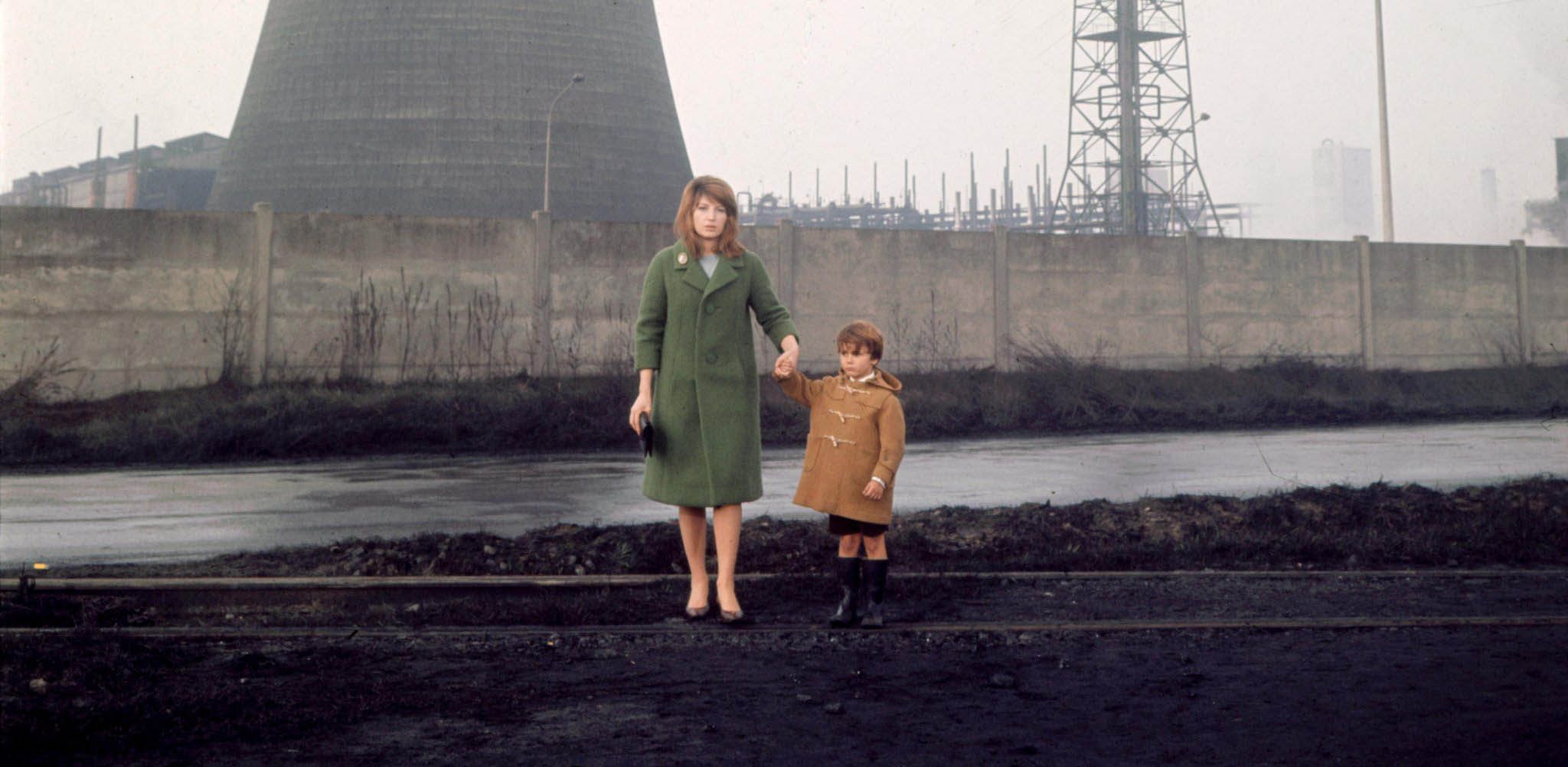
Cinema and architecture have always had a special relationship, because of the way in which they explore ideas using the dimension of space. Architecture in cinema can carry numerous symbolisms, and urban alienation can be the stage in which the action takes place, or be the main protagonist in silent but highly meaningful sequences.
Architecture, with its levels, its curves, its shapes and its dimensional contrasts with the human figure, can create visions of power and fragility and can bring sentiments of decadence or grandeur, of a surging future or a fading past, as it can be a mirror of the condition of a society. The metaphorical and social implications of a particular architectural landscape are matchless and can easily be explored by cinema in purely visual sequences.
1. Antonio Gaudi (Hiroshi Teshigahara, 1984)
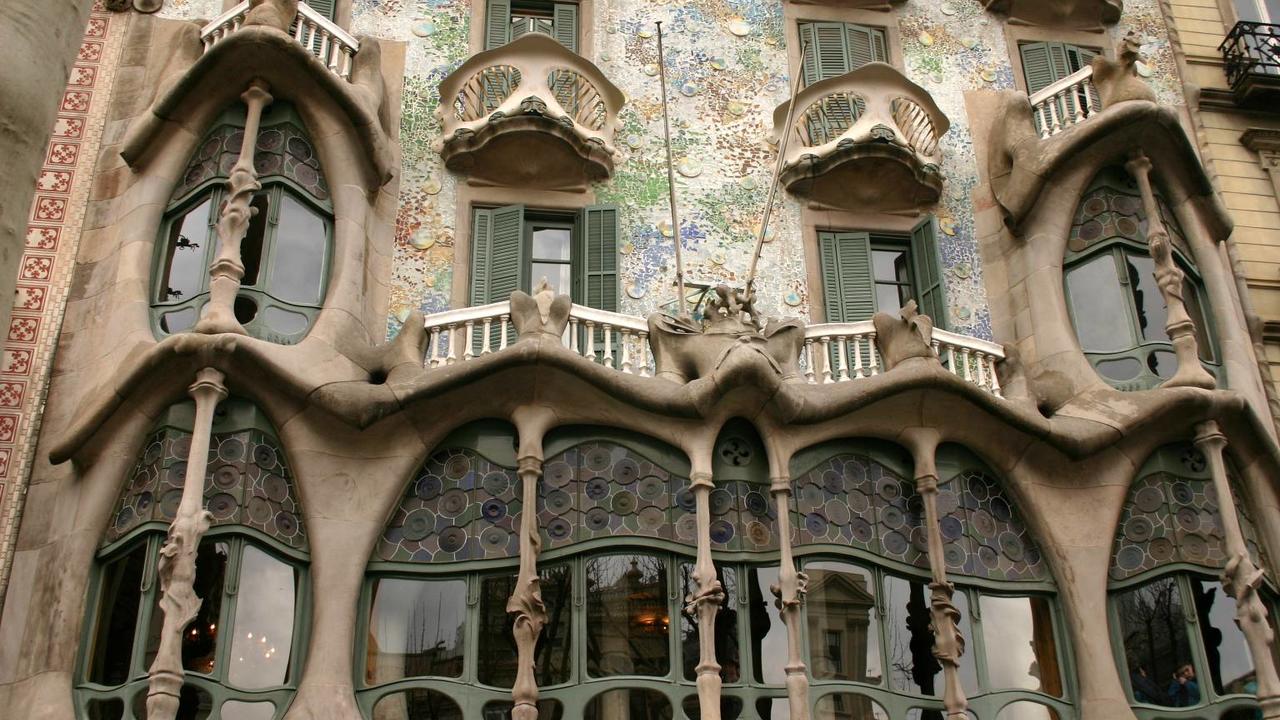
The audacious curves of Gaudì’s neo-gothic constructions are celebrated and mirrored in Hiroshi Teshigahara’s masterwork of camera movement and cinematography.
As gothic architecture was centered on the idea of man reaching up to the skies in a simultaneous act of devotion and hubris, Teshigahara’s camera often looks up with slow upward pans, as silent pleas to the sky. The experimental ambient noise soundtrack gives the film the mood of a celestial tone poem.
Sometimes the camera doesn’t move, as it observes a courtyard, gazing at arches that lead into dark areas, platoons of aligned pinnacles, breathing the stone interiors, the mixture between the gothic and the Art Nouveau sensibility. Other times, the camera wanders through the famous Parc Guell with architectural spaces with a sentiment of joi de vivre that echoes Renoir or Manet.
Neo-gothic spirituality is a union between heaven and earth, and Teshigahara explores it through Gaudì’s architecture, as the camera is a flying sailor, a messenger that connects the ground level with its vibrant movement, and the aerial level with its vertigo-inducing, majestic quiet and solemnity.
2. The Great Beauty (Paolo Sorrentino, 2012)
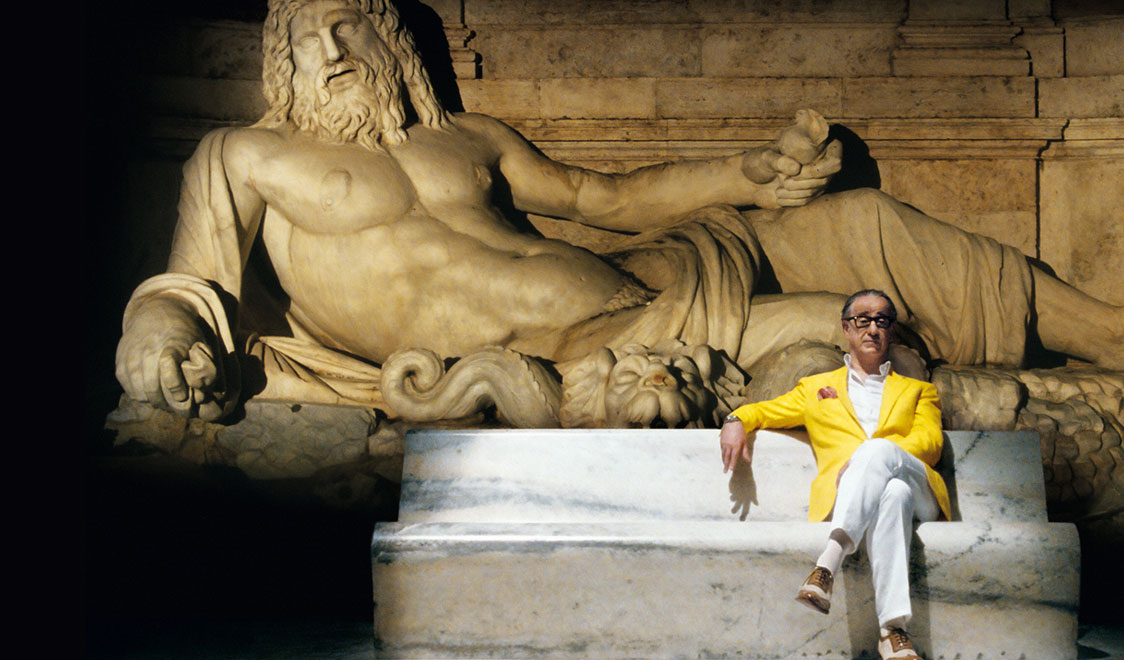
A film that is drenched in grotesquery and kitsch imagery as “The Great Beauty” creates a really strong contrast with the imposing Roman architecture, the giant symbols of one of the most glorious empires in history.
Paolo Sorrentino’s endlessly protracted dolly shots, and the isolation of the morning hours in which he portrays the monuments, is meant to accentuate the greatness of Italian history and build a contrast with the microscopic and pathetic humanity that the film shows.
The great French intellectual Stendhal, in 19th century, described the Italians as a civilization of former giants now turned into pygmies, a civilization that can’t measure up to its immense and glorious history. That’s one of the many intents of Sorrentino’s films, to pit a clownish, minuscule humanity against an architecture that carries the inheritance of millenniums.
3. Vive l’Amour (Tsai Ming Liang, 1994)
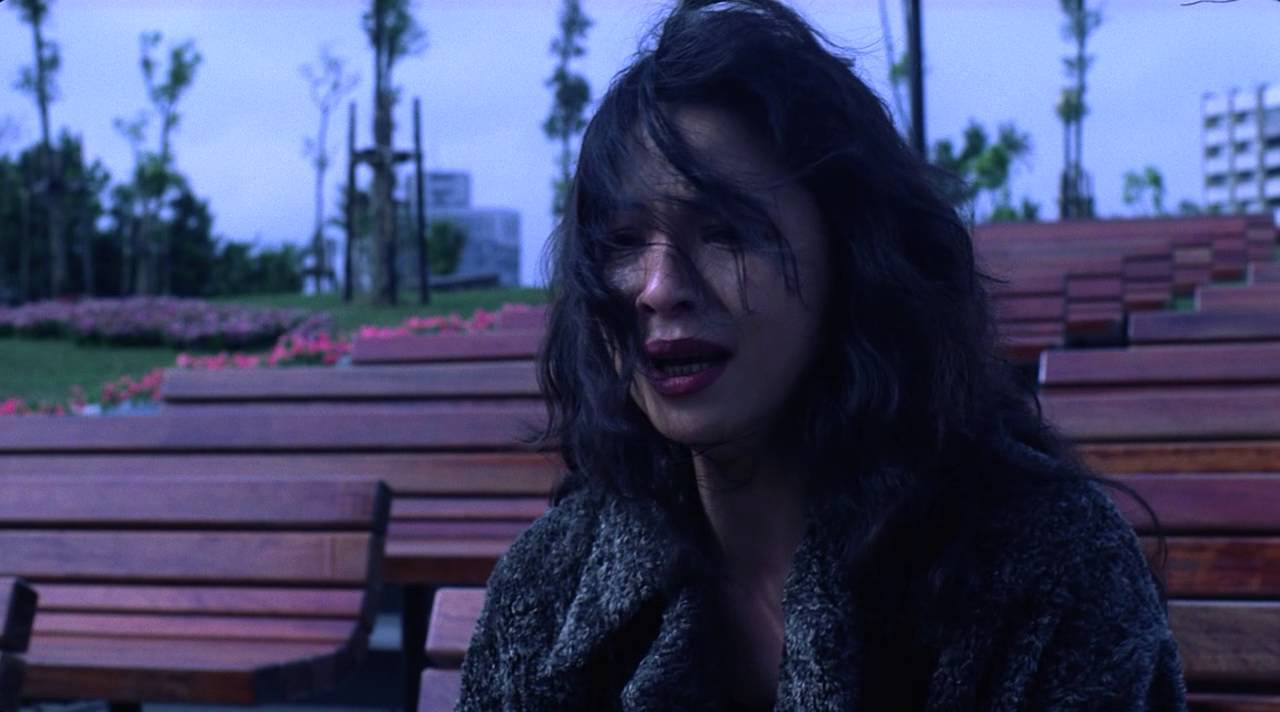
A city, considered our urbanized heaven, can be a playground of alienation and depersonalization. Architecture is not limited to exploring how a space can be filled, but also the emptiness in its own structure. Three people unknowingly share an apartment; they step into a space, they appropriate it, and it becomes the naked chamber of their emotional loneliness.
The surfaces of the buildings, the parks and alleys that Tsai Ming Liang reveals with slow pans, the way the characters occupy the same architectural space without talking to each other transforms the technological effort of humanity to express its control over the environment into a very sophisticated high-tech prison, a physical, formal and metaphorical prison.
The walls are cold, the corridors silent, the parks are wastelands, and the human figure inanely inhabits these spaces with their flesh also becoming a part of the design, an empty vessel.
The sonic landscape, the use of location, cinematography and camerawork, all evoke the ghost of Antonioni’s cinema of alienation, with films like “L’Eclisse”, “La Notte” and many others.
The difference that Tsai Ming Liang brings is his decision to devoid the architecture of his intrinsic symbolic power, and achieve symbolism through a mise en scene that is completely devoid of symbolism, that is harsh, crude and gloomy. The architectural landscape is a rotting carcass, and the humans in it are a pathetic, unemotional mess.
4. Kontroll (Nimròd Antal, 2003)
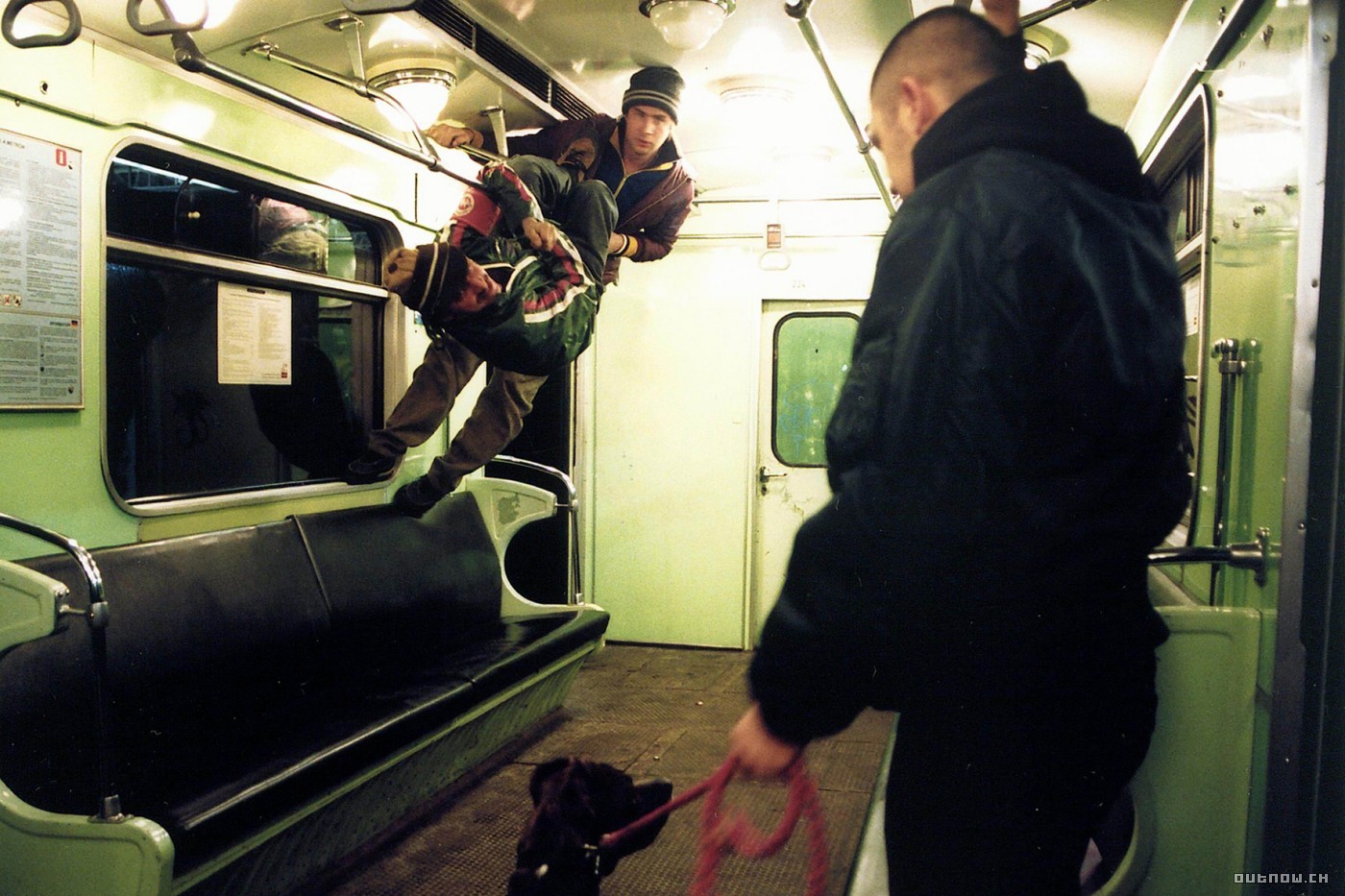
Architecture is symbolic in the way it plays with levels, the dialectic between high and low. “Kontroll” is completely set in the Budapest metro system, therefore it’s completely underground.
The dystopian tale of Bulcsu that develops through the tunnels (the film was shot at night in Budapest, when the train weren’t running), through chase scenes and mysterious characters, is at the same time a social allegory of Hungarian society and a tale of depression. The underground world that the characters inhabit is the world of the rejects, the untouchables of society, the rats that live in the shadows.
In “Kontroll”, the place is the story; the tunnels, the ceilings, the dark corners have a story. Bulcsu is also depressed, and the darkness in which he wanders are the recesses of his mind. Just like in Alfred Hitchcock’s “Psycho”, where the lowest level in the house is the level of the subconscious, the lowest level of the underground tunnels of Budapest is the lowest level of Bulcsu’s mind, where the sun is absent and there is no escape, and it is easy to get lost.
“Kontroll”, as a film, is the construction and the realization of an urban space that exists in its juxtaposition with the world above, to create a social and psychological parable. The absence of light creates a setting that is both fiercely political and extremely intimate.
5. Last Year in Marienbad (Alain Resnais, 1961)
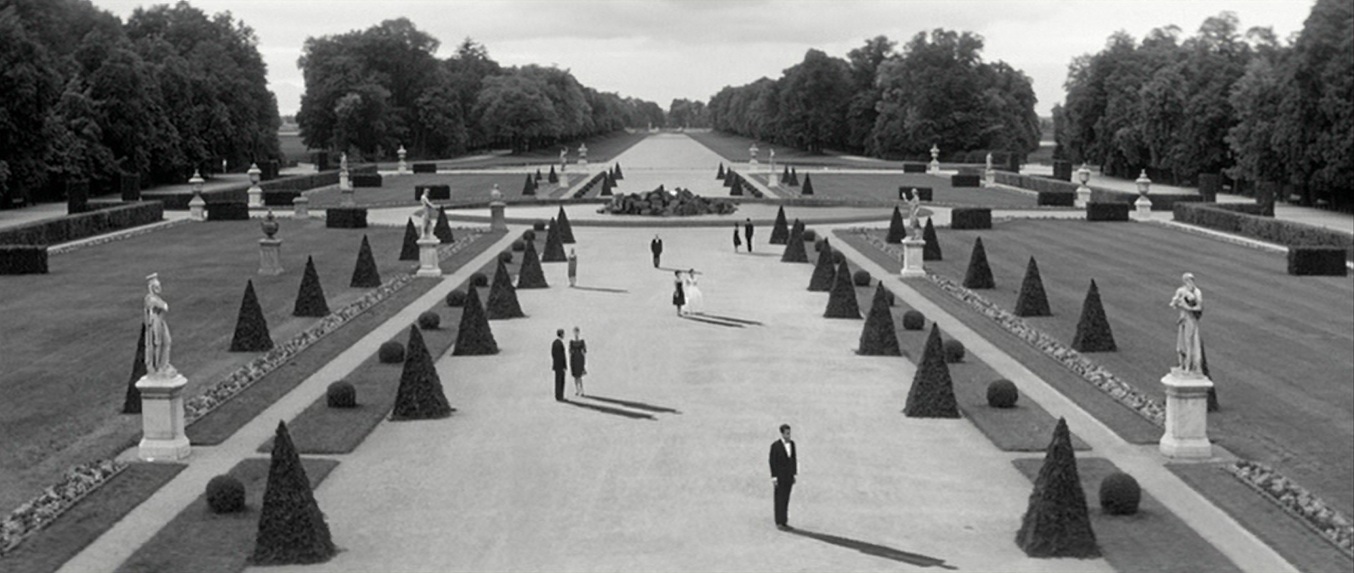
Marienbad, the space of memory, time, the prison of the past. A man and a woman meet, he claims to have met her previously in Marienbad, but she says she does not know him.
Alain Resnais creates one of the greatest architectural metaphors in the history of cinema and the 20th century, comparable to Xanadu in “Citizen Kane” or the hotel in Thomas Mann’s novel “The Enchanted Mountain”. Resnais uses camerawork and editing to confound the spatial notions in the palace and the gardens, creating a labyrinthine structure that makes the viewer feel lost in a dreamlike space.
The space that Resnais explores is the persistence of memory, symbolized by the inescapable building. He creates a geometrical architecture that is defined by its details, by its mirror-like structure, that explores the nature of multiple realities and parallel universes that is prominent in postmodern fiction, like Cortàzar and Borges.
The microscopic details are also influenced by Grillet, who wrote the script, who was an architecture enthusiast. It is not clarified if Marienbad is real or a place of the mind, a solipsistic hallucination or a concrete structure, but the ambiguity and the mysterious nature of the palace and the way the characters and the camera roam through it transforms a skeletal plot into a meditation on the nature of time, memory and reality.
6. Man With A Movie Camera (Dziga Vertov, 1929)
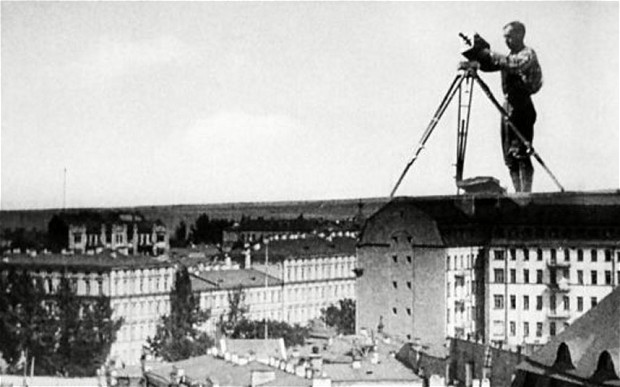
There was a time when urbanistic growth was a reason of collective excitement and an efficient medium of propaganda. The artistic movement known as Futurism put a lot of emphasis on the power of machines and technology.
In this context, films were produced that were based on the musical qualities of cinema connected with the architectural landscape. The most famous ones were “Berlin: A City Symphony” and “Man With A Movie Camera”.
The music of the Soviet productive machine takes center stage; bridges, cranes, buses, factories, dams, trams all work together in a dance that is emphasized by the rhythmic editing of Dziga Vertov. The power of the regime is in full display.
In one of the key sequences, a building that follows the architectural style of Soviet rationalism is folded like a piece of paper and the square crumbles on itself and at the same time is doubled, revealing an intrinsic symmetry, the harmony and rationality of architecture as an expression of human genius, will and power, and the bright future of the regime.
7. Germany Year Zero (Roberto Rossellini,1948)
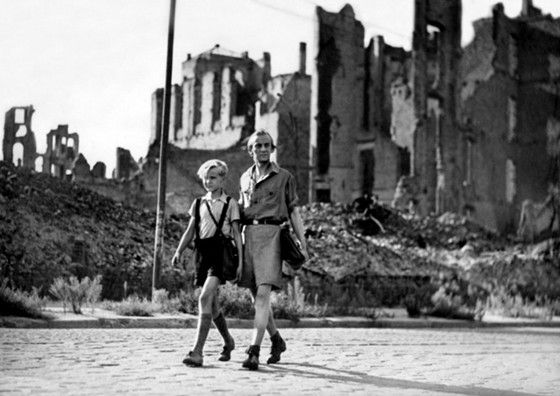
There was a time when cinema was considered capable of saving the world. The trauma of World War II, the devastation, and the carcasses of the buildings in Berlin were portrayed by Roberto Rossellini as a setting to the dramatic coming-of-age story of a young German child.
Rossellini was a great cinematic philosopher, as concerned with moral issues as he was with social issues. His film was criticized for its pessimistic attitude, especially by the German press. What Rossellini set out to do was not only highlight the economic and political crisis of Germany, but he was also interested in telling a moral tale.
The half-destroyed architectural landscape symbolizes the fractured German morality, damaged by the aberration of the Nazi regime; the young boy wanders through the remains, through a society in shambles on every level, looking for truth and stability. The uncensored destruction shown onscreen was also meant to be a form of shock therapy for the European continent that was coming to terms with the traumatic years of a conflict that was present in the minds of the majority.
The film is also full of spectral imagery that transforms Berlin into a twisted amusement park, into a dark fairytale, explored by the gaze of a child gradually uncovering the horror of the world, all the way to the tragic ending while the wounded buildings watch silently.